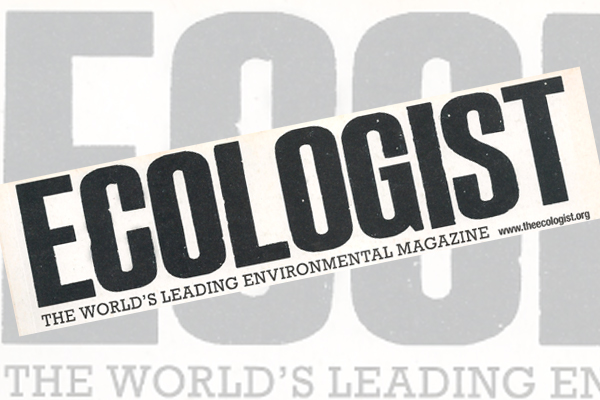Editorial: Eco-Urbanism

If you are reading this, chances are that you live in a city – one, perhaps, on its way to becoming a megacity with a population that exceeds 10 million or more. If not, it is likely that you, along with most of the world’s population, soon will be.
Statistics from UNESCO suggest that 50 per cent of the world’s population, some three billion people, now live in towns and cities. And while many of us see cities in a rather depressing light, for instance as places of isolation, urban poverty and crime, cities can also be our principal sources of social change and communication, centres of cultural expression, innovation and intercultural exchange. They both drive and respond to environmental change, and can, with forethought, become models of sustainability. Sadly, most of the world’s cities still fail to live up to their potential.
Of the many topics that the Ecologist has covered over the years, a green plan for the urban environment has received perhaps the least attention. Environmentalism is so often associated with country living that it is sometimes easy to lose sight of the fact that cities are human ecosystems. They are man-made but they also grow organically, and in many ways they are the most efficient habitats for humans on an increasingly crowded and resource-constrained planet.
It was with this in mind that we contacted the Prince’s Foundation for the Built Environment – the educational charity set up by the Prince of Wales to teach and demonstrate the principles of traditional architecture and urban design – to ask how one would begin to put together a roadmap for a greener urban environment.
The Government has made a commitment to zero carbon buildings by 2016 and has begun revising building regulations to move towards that goal. What is clear is that energy use is at the core of any sustainable city plan, whether it is the energy to heat and power our buildings or that which is used to bring food to urban inhabitants or keep them mobile, or the embedded energy in their construction and renovation.
Embracing this will inevitably alter the way we approach buildings and urban design. Even so, we need to get beyond the love of green gadgets and eco bolt-ons for existing buildings to a place where urban sustainability is driven in a ground-up way, not just because it might ensure a better future for us all but because it improves the quality of life for city-dwellers, as well as saving them money in the here and now.
This month’s comprehensive special grew out of a day-long roundtable session involving ourselves and the authors of the articles, in which we sought to define what it will take to design cities with sustainability, community, a sense of place and the resilience to withstand any climatic or cultural changes that may arise in the future.
The result is a full and fascinating exploration of where we are, where we need to be and what stands in the way of helping our cities realise their full potential. I am most grateful to our guest editor Hank Dittmar, chief executive of the Prince’s Foundation for the Built Environment, who acted as a guiding light for in this long-overdue Ecologist special, and hope that readers find it both an inspiration and an education. I certainly did.
On a different note, some of you will already be aware that the Ecologist is relaunching online in June. You can expect some big changes to our website, which will help you stay abreast of everything going on in the environmental movement. To find out more about our plans please turn to our news section (page 11) to get the full story.
- This article first appeared in the June 2009 edition of the Ecologist.












